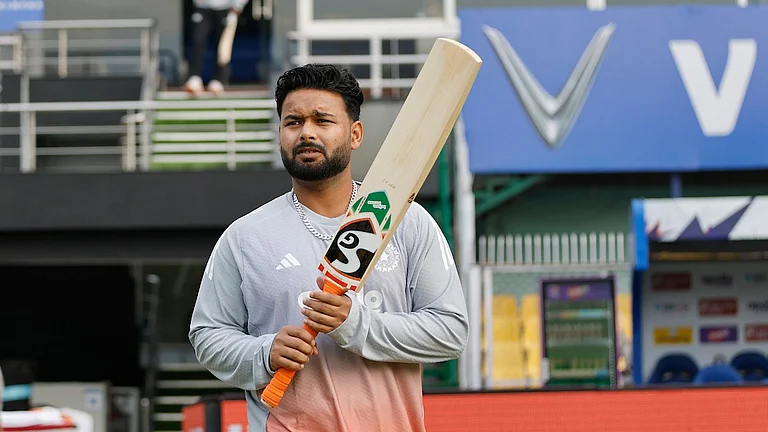West Bengal, a state rather infamous for its tradition of political violence, has just got another name added to its hall of shame: Bagtui village in Rampurhat subdivision of Birbhum district where eight persons, including women and children, were burnt to death on Monday night in apparent retaliation to the killing of a deputy chief of Barshal gram panchayat run by the state’s ruling party, the Trinamool Congress (TMC).
While opposition leaders, including the CPI(M) state secretary Md Salim and the BJP’s Suvendu Adhikari, the leader of the Opposition in the state assembly, visited the village on Wednesday to speak to the locals, chief minister Mamata Banerjee, who already ordered a probe by a special investigative team, scheduled her visit to the spot on Thursday. No one will be spared, she has said.
Bengal is no stranger to gruesome instances of political violence. In April 1982, as many as 17 monks, including a female, from the Ananda Marga religious sect, were dragged out of taxis and burnt alive on Bijon Setu in Kolkata in 1982. The Ananda Marga group had shown political inclinations
and had entered a tussle with the Left Front which was at that time enjoying Supreme authority in the state. Leaders of the CPI(M) remained the prime accused.
In Birbhum district itself, Soochpur in Nanoor stood witness to the spine chilling incident of the lynching of 11 agricultural labourers, all of them TMC supporters, in July 2000. The accused were all members of the ruling party, the CPI(M). Next year, in Chhoto Angaria village in West Midnapore district in January 2000, five persons were burnt to death at the residence of Baktar Mandal, who was known as a TMC worker. Again, the blame was on the CPI(M).
However, all these incidents involved the ruling party and an opposition political force. But the Bagtui incident involves no opposition political force. None of the victims are known to have any association with any of the opposition parties.
This, to an extent, also symbolises a major change that has taken place in the context of political violence in the state since the Mamata Banerjee government took charge in 2011, and especially since 2014 after taking control of the space in all representative formats - Lok Sabha, Vidhan Sabha,
municipalities and corporations and gram panchayat. In the absence of opposition forces, violence between members and supporters of parties was replaced with violence between members of factions within the ruling party.
Inter-party violence did take place between 2019 (after the BJP recorded an exceptional LS tally from Bengal) and 2021 (till the TMC's resounding victory in the assembly elections) but it all has shifted to violence related to inner-party rivalries once again that opposition parties have
been pushed to the back foot.
"After the 2021 assembly elections, the TMC has wiped out every trace of opposition from different areas. Opposition supporters were forced to join the TMC en masse. Since opposition parties have no space, people with all sorts of interests are now under the banner of the TMC, resulting in numerous
factions and intense intra-party rivalry. This has gone beyond the party’s control," said Biswanath Chakraborty, a professor of political science at Rabindra Bharati University in Kolkata.
During the past few years, whenever the TMC faced charges of perpetrating violence on opposition party workers, the ruling party has cited how they had many more members killed than opposition parties lost their members to violence. Opposition parties, on the other hand, pointed out that in the majority of the cases involving the death of TMC leaders, the accused either belonged to a rival faction of the party or were involved in criminal rackets.
As per the versions of the relatives and neighbours of the victims of the Bagtui massacre, Bhadu Sheikh, the deputy chief of the panchayat, was chatting with some locals by the side of a road when assailants on four motorbikes first hurled bombs and then shot him. Within hours, there was an attack
on the house of Sanju Sheikh and his neighbours at the Paschimpara area of the village. First, bombs rained and then the miscreants set several houses on fire. Eight charred bodies were found later.
Sanju Sheikh was accused of the murder of Bhadu Sheikh's elder brother last year and is currently out on bail. Bhadu's relatives have alleged Sanju and his associates had recently threatened Bhadu. The police are still on the lookout for him.
Over the past few weeks, there have been a number of attacks on TMC leaders in different parts of the state. A councillor at Khardah near Kolkata was publicly shot from close range and killed on the spot, another loc TMC leader was shot and stabbed to death in Barrackpore and a booth Committee Secretary in Patashpur Town narrowly survived an attack. On Wednesday, a TMC leader at Hanskhali in Nadia district suffered bullet injuries in the head and was brought to Kolkata for treatment.
In all these cases, the accused were people with criminal antecedents.
Meanwhile, Bengal Congress unit president Adhir Ranjan Chowdhury, who is scheduled to visit the village on Thursday, has written to the President of India, requesting to invoke Article 355 of the Indian Constitution “in view of the deteriorating law & order situation in West Bengal.” Article 355 deals with an emergency provision that allows the Union government to intervene and protect a state against external aggression or from internal disturbance.


























